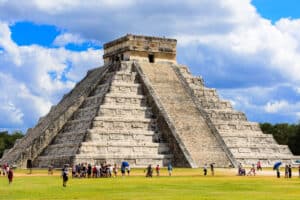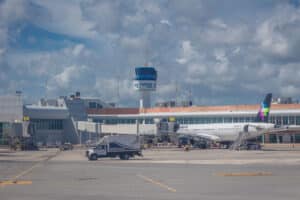Welcome to Mexico City, the heart and soul of Mexico and one of the largest cities in the world! So, how safe is this metropolis? Should you pay a visit?
Absolutely. Mexico City isn’t among the most dangerous cities in Mexico. But before boarding a plane, there are a few things you need to know about staying safe in this city.
Like any bustling city, it’s essential to exercise extreme caution simply because you’re much more vulnerable when you’re visiting a foreign location. Let’s learn why Mexico City continues to be an alluring destination and show you how you can ensure you stay safe on your trip.
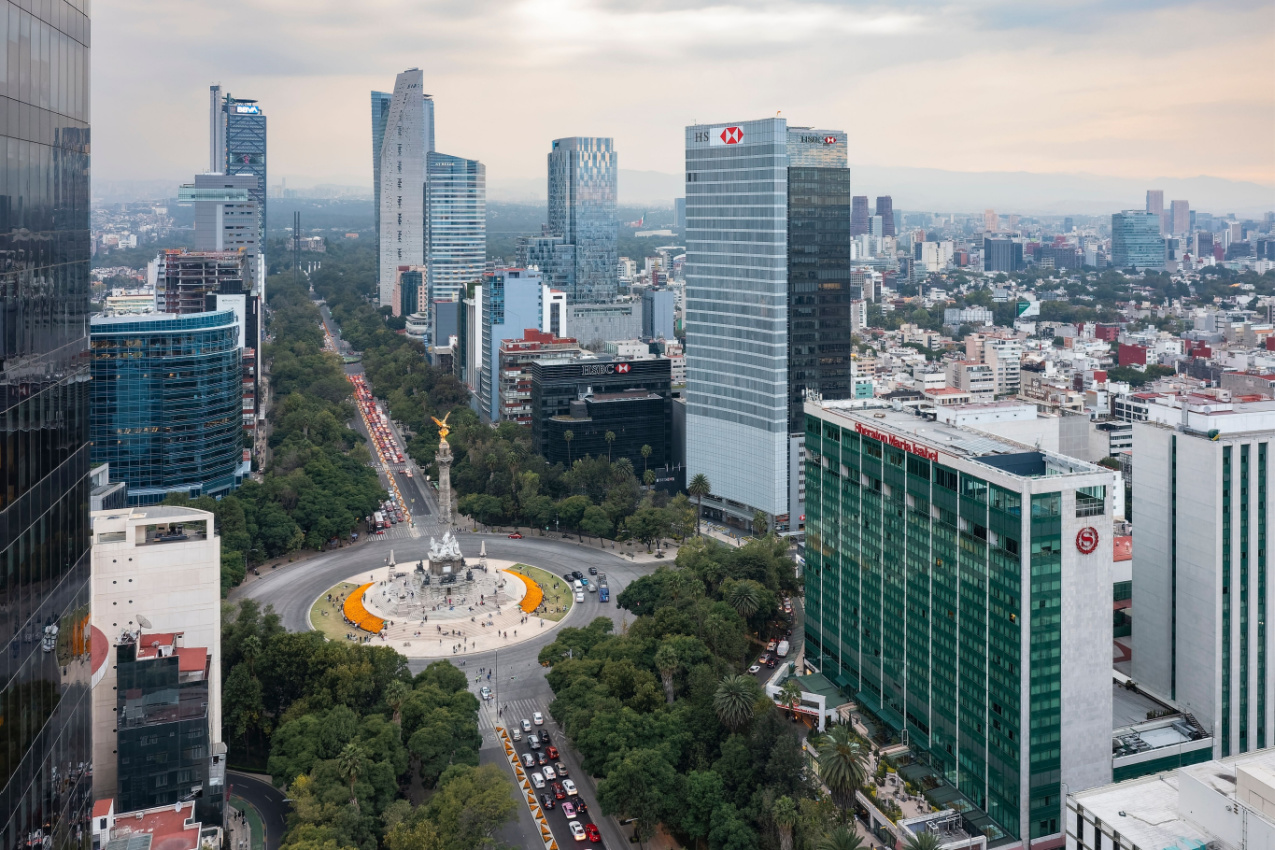
Are you planning a last minute trip to Mexico City? We’ve put together all the resources you’ll need for a fun & safe travel:
🛌 Best & Safest Places to Stay in Mexico City:
👉 Hotel Posada del Hidalgol – Outdoor swimming pool, Bar, Free Parking
👉 La Casa de los Patios Hotel – Spa and wellness centre, Family rooms, Restaurant
👉 Hotel Hacienda Vista Hermosa – Facilities for disabled guests, Free WiFi, Bar
👉 Hotel Mio Vallarta – Outdoor swimming pool, Free WiFi, Non-smoking rooms
⛱️ Fun Activities & Tours in Mexico City:
👉 Teotihuacan, Guadalupe Shrine, Tlatelolco & Tequila Tasting Tour
👉 Hot Air Balloon Flight
👉 Historic Downtown Tour
🚗 Best & Safest Mexico City Transportation Services:
👉 Airport Pickup Service – Welcome Pickups
👉 Rent a Car – DiscoverCars
🙏 Stay Safe While Travelling:
👉 Safetywing (for medical insurance)
👉 VisitorsCoverage (for trip insurance)
Unveiling the Reality: A Comprehensive Look at Mexico City’s Crime Rates
Mexico City is the capital of Mexico. And as the capital, it wears many hats. It’s the political powerhouse of the country, a cultural epicenter, and the nation’s beating heart.
The U.S. State Department has granted travelers the green light to travel there, and every year, Mexico City welcomes approximately 3.5 million visitors.
However, like in any bustling metropolis, travelers should “Exercise Increased Caution” during their stay. The city is a vast metropolis and there is both violent and non-violent crime there, so there’s still a risk of trouble.
Mexico City Crime Rates
The crime in Mexico City is moderate, 67.95.
The criminal activity in Mexico City is usually concentrated in specific neighborhoods, meaning that if you stick to the safe zones for tourism, you are good to go. Cartel presence is certainly felt, but their strongholds are elsewhere, like the border town of Tijuana.
Mexico City Safe Areas
The safest neighborhoods to visit in Mexico City are:
- Reforma
- Santa Maria La Ribera
- Condesa
- Roma Norte/Sur
- Centro Histórico
- Juarez
- Escandón
- San Rafael
- Coyoacán
- Polanco
Travelers feel most at peace in these city districts, but as with any tourist hotspot, there is still the possibility of scams or petty crime — so exercise caution.
Mexico City Dangerous Areas
The most dangerous neighborhoods in Mexico City are:
- Tepito
- Doctores
- Iztapalapa
- Colonia del Valle
- Tlalpan
- Xochimilco
- Tlatelolco
- Ciudad Neza
Each of these neighborhoods is notorious for different crimes. For example, Tepito is regarded as Mexico City’s “black market” whereas Iztapalapa had increased incidents of violence against women.
Overall, this is a broad generalization of a massive and diverse metropolis, and crime can happen virtually anywhere and at any moment. So never let your guard down, even in Mexico City’s safest neighborhoods.
What Are the Police Doing to Protect Mexico City?
Mexico City’s police force comprises over 84,000 police officers, making it one of the largest in Latin America.
The police force is divided into several categories. The Federal police, for example, monitors Mexico City’s highways and defends federal buildings and airports. Mexico City police maintain peace within the city borders, and each of the 23 municipalities agglomerated within Mexico City has its own local police department.
Overall, the task of these police forces is to control a roiling metropolis of 20 million people — which sadly is uncontrollable. Nevertheless, tourism is very important for the capital, so officers prioritize the safety of its visitors.
Navigating the New Normal: Ensuring COVID-19 Safety in Mexico City
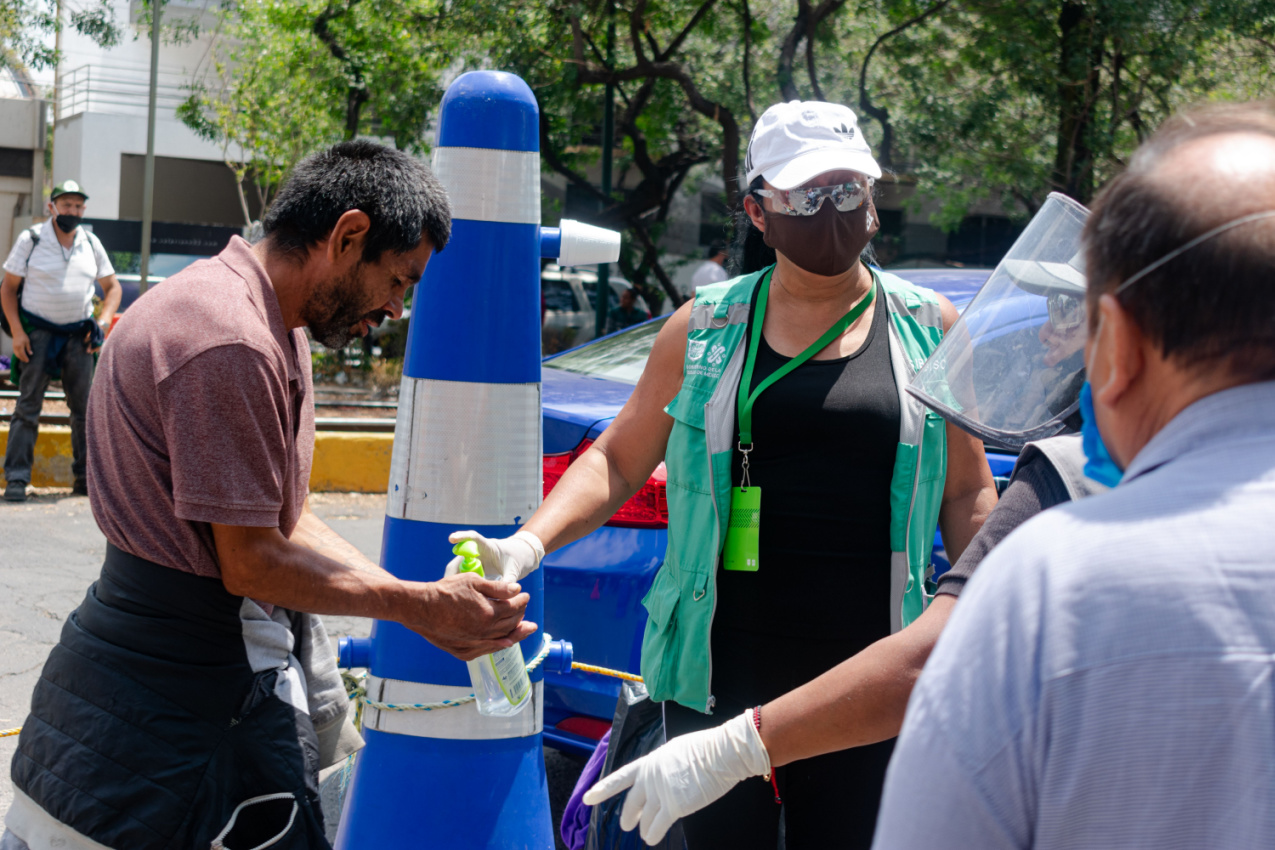
Passengers don’t require a negative COVID-19 test to enter Mexico City.
Many Mexico City hospitals, clinics, and laboratories provide private COVID-19 testing. Generally, PCR testing cost between 950 and 4500 MXN ($53 and $250), whereas viral antigen tests cost between 200 and 1000 MXN ($11 and $55).
The American Red Cross has a list of safety precautions you should follow to enjoy a healthy trip to Mexico City and avoid the transmission of COVID-19. The primary ones are social distancing and frequently washing your hands.
Perils of Nature: The Risk of Natural Disasters in Mexico City
Three natural forces endanger Mexico City: earthquakes, volcanic eruptions, and hurricanes.
Earthquake Information and Precautions
Mexico City is subject to earthquakes due to its position on the Trans-Mexican Volcanic Belt, where numerous tectonic plates intersect.
One of the worst earthquakes in Mexico City happened on September 19, 1985. The earthquake had an 8.1 magnitude and completely destroyed the capital.
Earthquake trackers reveal that minor tremors and major earthquakes continue to happen in Mexico City. The U.S. Federal Emergency Management Agency has information on what to do before, during, and after an earthquake. As an added precaution, you can install the 911 CDMX app on your smartphone to receive an earthquake warning 60 seconds before it occurs.
Volcanic Eruptions Information and Precautions
Mexico City is near several volcanoes, including Popocatépetl, Iztacchuatl, and Tláloc.
Popocatépetl is the only one of the three to have periods of increased activity, and its most recent eruption occurred in June 2022.
The principal concerns linked with volcanic eruptions in Mexico City include ashfall, potential disruption to air traffic, and respiratory difficulties caused by small particles in the ash.
Visit the Mexican Disaster Prevention Centre’s website for the most recent reports on volcanic eruptions.
Hurricane Information and Precautions
Mexico City is protected from the direct impact of storms due to its higher altitude and inland location. It may, however, suffer the indirect effects of a hurricane, such as increased rainfall and flooding.
Such a severe storm happened in 2011, causing significant flooding in Mexico City and forcing almost 2,000 families to flee their homes.
Another flood occurred in 2018, which officials labeled the year’s worst storm. The three-hour storm poured 53 millimeters of rain on the city. The flooded streets buried automobiles and damaged several dozen homes, and the severe winds pulled down and destroyed many trees.
In 2021, two people died from a flood, and one was reported missing. The storm was said to be so severe that the streets turned into a full-blown river.
For the most recent weather forecasts, check out The National Hurricane Service, and in the event of a natural disaster, be sure to follow the Massachusetts Emergency Management Agency’s safety tips.
Breathing Safely in Mexico City: Carbon Monoxide Awareness and Prevention
If someone inhales carbon monoxide gas for too long, they can become poisoned. What’s worse — one cannot detect the presence of carbon monoxide gas since it has no color or smell.
Carbon monoxide gas may leak from a defective appliance, such as a water heater, stove, or furnace, and if inhaled for a more extended period, it can be deadly.
The symptoms of carbon monoxide poisoning include headaches, dizziness, nausea, disorientation, weakness, chest discomfort, and loss of consciousness.
Mexico City had a case of carbon monoxide poisoning. In November 2022, three Americans got poisoned by a gas leak while sleeping in their Airbnb.
Even though CO poisoning can be lethal, such a tragedy is preventable with today’s cutting-edge technology. For starters, you can book an accommodation that has a carbon monoxide detector. If the hotel or rental property doesn’t have one, or if it breaks, purchase a backup detector and pack it with you.
Mexico City’s Weather Patterns: What to Expect?
Mexico City enjoys two seasons: wet and dry.
The dry season in Mexico City begins in November and lasts until April. Around this time, the city has warm weather and very little rainfall.
The daily temperatures in the dry season range from the low-70s°F (low 20s°C ) to the mid-70s°F (mid-20s°C). The temperature at night significantly drops, ranging from 45°F (7°C) to 54°F (12°C).
The wet season starts in May and lasts until October. Mexico City is the warmest during this time of year but has the most rainfall and humidity.
The average highs during the day range from the low 70s°F (low 20s°C) to mid-70s°F (mid-20s°C). At night, the temperature drops to 56°F (13°C).
The rainiest months in Mexico City are June, July, and August. However, It’s crucial to remember that just because it rains more frequently during the wet season, it doesn’t mean it rains every day or all day. Mexico City still enjoys sunny days this season; the rain typically starts in the afternoon.
Weather Overview in Mexico City
Summer
Mexico City’s summer season spans from June through August. Summers in this region are hot, rainy, and humid. The average daily temperature is around 65°F (18°C), and the maximum it can reach is 67°F (25°C). At night, the temperature drops to 56°F (13°C).
Fall
Mexico City’s fall season begins in September and wraps up in November. During this period, Mexico City shifts from the wet season to the dry season, so rainfall is still present but gradually decreases towards the end of the season. The average daily temperature may reach up to 64°F (18°C), and the maximum it can reach is 73°F (23°C). The nights become colder, with a minimum temperature of 47°F (8°C).
Winter
Mexico City’s winter season begins in December and concludes in February. Although snowfall is uncommon in Mexico City, the nearby mountains may receive some snow around this period. During the day, average temperatures may reach up to 60°F (15°C), the maximum being 75°F (23°C). Winter nights in Mexico City drop to 45°F (7°C).
Spring
Mexico City’s spring season lasts from March until May. In the spring, temperatures steadily rise, and the weather becomes drier with occasional showers. The average daily temperature is around 67°F (19°C), and the maximum is 80°F (26°C). Nights are cooler, with temperatures dropping to 50°F (9°C).
When Is the Best Time to Visit Mexico City?
There is never a bad time of year to travel to Mexico City.
The peak tourist season is between March and May when the weather is sunny and pleasant for outdoor activities, not too cold like in the winter and not too rainy like in the summer.
June, July, August, April, and December are the least busy months. Due to the rainy season in Mexico throughout the summer and the holiday season in December and April, many travelers choose another time to travel. However, many hotels offer discounts around this time, so if you like a more relaxed traveling experience, this may be the perfect month to visit Mexico City.
Between September and November, tourists can participate in some of the city’s most popular festivities and cultural events, such as the Day of the Dead. The weather begins to get chilly, but it’s still pleasant.
In January and February, you’ll need a jacket, since these two months are one of the coldest of the year. So if you are a winter person who enjoys chilly weather, January and February are the months to visit Mexico City.
March marks the beginning of spring. This is the time of year when the city’s landscape is most charming. Mexico City is famous for its purple jacaranda trees, which bloom in late February and early March, so if you visit during this period, you’ll be in for a treat.
Exploring Mexico City Solo or With a Family: Is It a Good Idea?
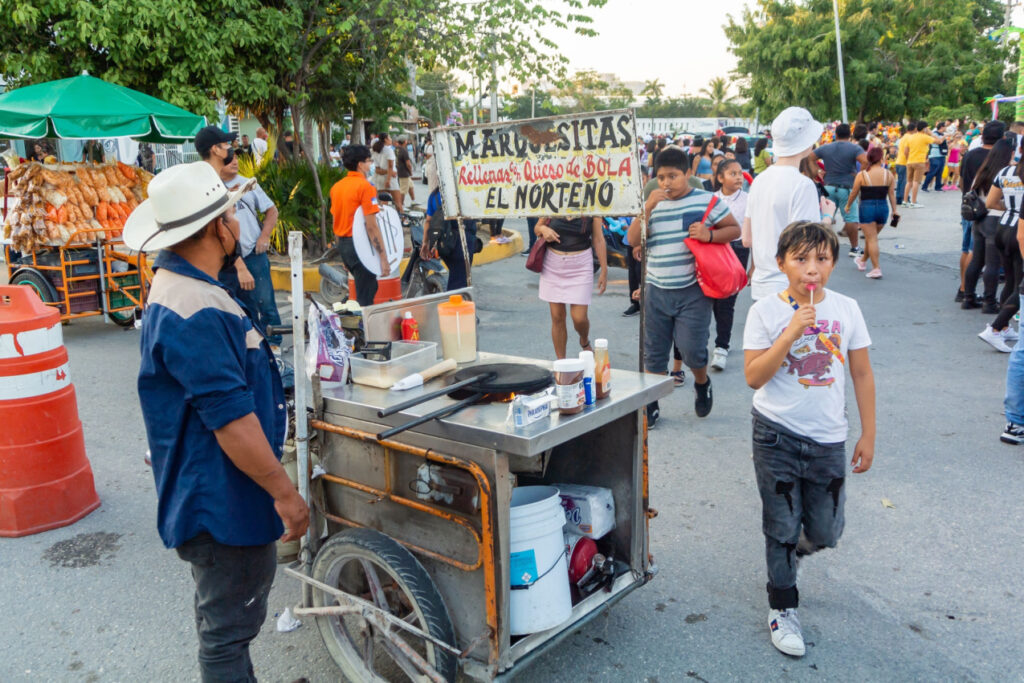
Mexico City is a safe place to visit solo and with your family. However, the Mexico Travel Advisory advises that you use caution while there. Here are some pointers for safe city navigation.
Essential tips for staying safe:
- Learn some basic Spanish
- ADO is a super reliable bus company (they accept only pesos)
- Uber and DiDi are excellent cab services
- Get a Mexican SIM card.
- Don’t drink tap water
- Know the emergency phone numbers: 911 for police, 066 for ambulances, and 080 for fire services
- Book your stay at a reliable hostel, hotel, house-sharing, or rental unit (Booking and Airbnb are reliable online booking services)
- Don’t draw money from a public ATM to avoid getting your money stolen. Instead, go to a bank or a supermarket
Tips for traveling alone:
- Be aware of your surroundings and avoid confrontation
- Drink responsibly
- Don’t leave your drink alone to avoid someone putting a narcotic in it
- When you’re out and about, avoid wearing pricey items like jewelry
- If you are given illegal substances, simply decline them
- Never wander alone at night
- Dress appropriately, especially if you are a female solo traveler
- Contact the resort’s staff for whatever help or guidance you need during your stay
- Notify friends and relatives of your vacation schedule and daily plans
Tips for traveling with your family:
- Never split as a group
- Always keep an eye on your children
- Consider renting a car rather than taking taxis
- Find a hotel that provides a variety of activities for your family
- Pack a first-aid kit
- Drink responsibly so you can keep track of your surroundings and children
Take basic precautions, keep vigilant, follow our safety tips, and you’ll have a great holiday!
Conclusion
If you’re wondering if Mexico City is safe, the answer is YES, Mexico City is a safe traveling destination.
The United States State Department has designated Mexico City as a place where travelers should exercise extra caution due to crime — typical advice for every bustling metropolis.
Yes, Mexico City does have some dangerous areas where criminal activity dominates, but if you stick to the tourist areas where people feel the safest and where the crime rate is at its lowest — your trip to this capital will be unforgettable!
Mexico City has a lively arts scene, a buzzing nightlife, and a rich culinary tradition. So, now that you understand safety, it’s time to start making travel plans!

